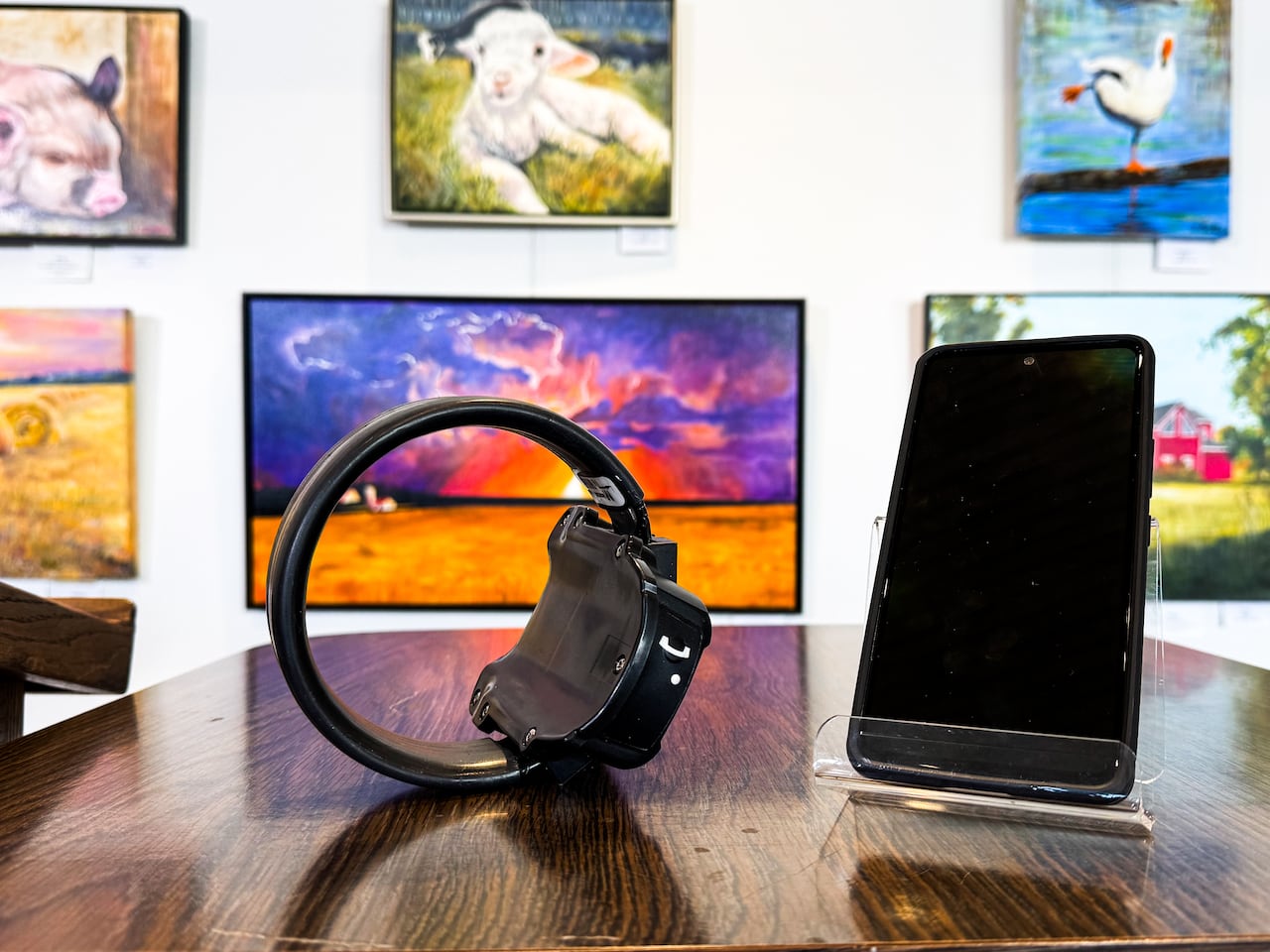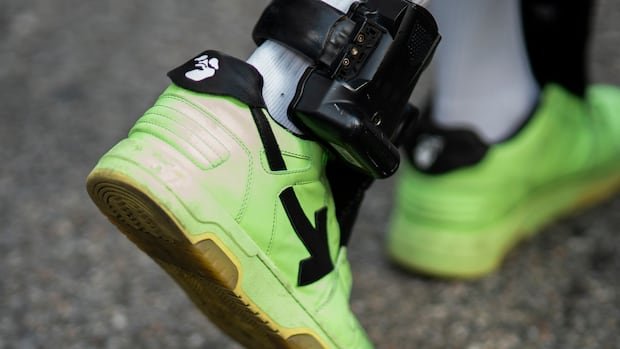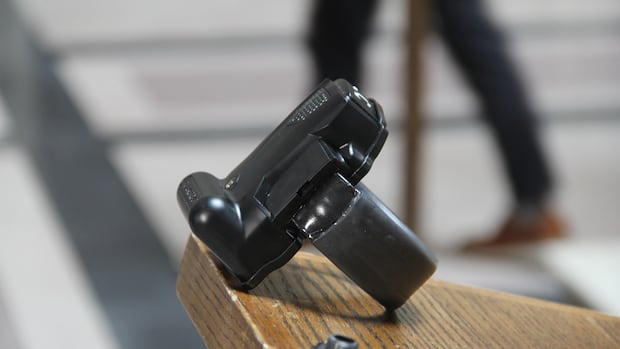More than half of people released with an ankle monitor since such devices were introduced in Manitoba in August 2024 have been rearrested or violated the rules of their release while wearing one, recent figures obtained by CBC News show.
According to the Minister of Justice’s office, 530 people were released through that program through October 16, 2025. Of those, 243 were rearrested for breach of conditions or new crimes, 53 removed the device and fled, 16 damaged the strap and 12 let the battery run out, representing just over 60 percent of the total.
Charges against 11 people were stayed, 19 were convicted and one was acquitted. Eight people were removed from monitoring conditions and one person died while wearing the device.
As of October 16, there were 166 people who still had ankle monitors.
Those figures were recently provided to CBC News by Justice Minister Matt Wiebe’s office, after the province previously refused to release them.
The data was released after CBC obtained similar figures during a recent bail hearing, where a Crown prosecutor used the statistics to argue that a man accused of domestic violence-related charges should not be released, even with an ankle monitor.
“The limits of the program are underscored by the statistics,” prosecutor Ben Wickstrom told a judge at the hearing, who ended up denying the defendant bail.
In another recent bail hearing for a prolific alleged shoplifter, a Crown prosecutor went further, calling the program’s failure rate “staggering” and noting that his office has another case in which a person was accused of robbing a pharmacy while wearing an ankle monitor.
“I have often heard it said: ‘Well, we know where an individual is [if they’re wearing an ankle monitor].’ Well, no, we only know that they have a charged battery. [and] “They have not removed the device,” Crown attorney Colin Soul said during the hearing. “This is not some far-fetched submission by the Crown – we know this has happened.”
That defendant was also denied bail.
More than half of people released with an ankle monitor since the devices were introduced in Manitoba last August have been rearrested or violated the rules of their release while wearing one, recent figures obtained by CBC News that one expert says paint a “stark” picture of the program’s success.
The province introduced ankle monitors last year, when Justice Minister Wiebe said they could be used to prevent reoffending and ensure people follow their conditions while on release.
The devices use 24/7 GPS tracking and real-time communication via voice, audio and vibration commands, and can play loud alerts if someone enters an area they are not allowed to be in.
Success or failure?
Criminal justice professor Michael Weinrath said that while there is often interest in electronic monitoring because the ankle bracelet creates an idea of security, the latest figures on Manitoba’s program suggest it has “failed miserably.”
“I don’t think it takes a fellow like me with a PhD to tell people these are not good numbers,” said Weinrath, who teaches at the University of Winnipeg. “They are quite austere.”
In an interview last week, Justice Minister Wiebe said he believes the province is having success with the program, in part because GPS data from the devices allows authorities to track people quickly if they commit an offense or a new crime.
“Before now… the search would be started” in such cases, he said. “And that puts a huge strain on our police resources.”
But Weinrath said including people still using the devices in the failure rate, rather than just looking at the results of people who finished the program, is “a way to inflate the success numbers.”
If you eliminate the 166 still in the program, your failure rate is actually 89 percent.
“I don’t know what program is out there that has an 11 percent success rate and people are…really happy with that,” Weinrath said, adding that even with the Justice Department’s estimate, “you’re still over 50 percent; those are not good numbers.”

However, determining the success of the program depends on how it is measured, says defense attorney Christopher Gamby.
An ankle monitor that detects someone violating could be considered a failure because they broke the rules, or a success because the device detected it, he said.
“If you think the goal of the program was to get individuals… to never reoffend and never breach its conditions, I guess you could suggest that the program wasn’t doing what it purported to do,” said Gamby, who is also director of communications for the Manitoba Association of Criminal Defense Lawyers.
“I don’t think that’s a realistic way to look at it. I think if there are people being arrested again for not complying with the program, ultimately it’s probably a success story.”
Gamby said the program can also be useful beyond tracking potential violations, such as in domestic violence cases, where defendants can be prevented from entering a certain radius that includes the complainant’s home.
More than $4 million budgeted for monitors
Criminologist Weinrath said it’s “troubling” that while Manitoba’s justice department is spending millions of dollars on ankle monitoring on the grounds that it helps keep Manitobans safe, prosecutors in the province are questioning the program’s effectiveness in court.
“When you have that kind of conflict even within your own department, where people on the front lines say, ‘Well, let’s not use electronic monitoring because we know it’s not working’ … that seems to me to be a sign of lack of success,” he said.
However, Justice Minister Wiebe said he is “happy to know that our Crowns are being cautious with this program,” adding that the province has given “clear instructions” to prosecutors to consider public safety and confidence in the justice system when making bail decisions.
The province launched the program, overseen by Commissionaires Manitoba, in 2024 with a budget of $2.9 million over two years, and then expanded it from 100 devices to 200, at an additional cost of $1.2 million for the year.
TO The previous Progressive Conservative government eliminated a similar program in 2017.following an NDP-initiated review of the program that former Justice Minister Heather Stefanson said found the bracelets were often inaccurate or ineffective.
Before being ousted by the NDP in 2023, the Manitoba PCs had also announced plans to reinstate electronic monitoring.
‘Where else could we be putting that money?’
The reintroduction of ankle monitoring came amid calls to change the bail system across the country, including in Manitoba, where Premier Wab Kinew earlier this month He criticized a judge’s decision to grant bail to a driver accused of a fatal accident.
During the recent bail hearing for the alleged burglar at which the ankle tracking numbers were raised, defense attorney Carl O’Brien urged the judge to let the law, not public reaction, guide his release decision.
“You should not worry about public reaction from certain political figures who may feel they need to comment on a judge’s decision to grant bail, which has happened recently,” O’Brien said.
Criminologist Weinrath said while he understands calls for electronic monitoring “because it’s technology and it’s sexy,” and the province has been under pressure to address calls for changes to the justice system, he believes the money would be better spent addressing issues that fuel crime.
“Where else could we put that money? We could put that money into addiction treatment, we could put it into mental health treatment, trying to provide more support to our population that is out on bail,” he said.
When it comes to the future of ankle monitoring in Manitoba, Wiebe said the province will continue to monitor it.
“We are going to make sure it is working. We know that there are more communities that are asking for this program,” said the Minister of Justice. “So we’re going to look for opportunities to continue building.”










